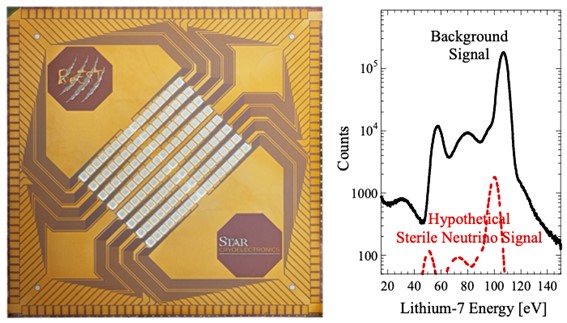What’s the Matter? STAR Cryoelectronics Builds Superconducting Quantum Sensors for X-ray Analysis and Dark Matter Searches
 STAR Cryoelectronics, founded in 1999, is a leading worldwide supplier of advanced ultrasensitive quantum sensors and X-ray detectors based on superconductors and related control and readout electronics. The company also offers custom thin-film foundry services for superconductor electronics applications, cryogen-free, adiabatic demagnetization refrigerator (ADR) cryostats, and high-resolution spectrometers based on superconducting detectors for X-ray microanalysis. The company is based in Santa Fe, N.M.
STAR Cryoelectronics, founded in 1999, is a leading worldwide supplier of advanced ultrasensitive quantum sensors and X-ray detectors based on superconductors and related control and readout electronics. The company also offers custom thin-film foundry services for superconductor electronics applications, cryogen-free, adiabatic demagnetization refrigerator (ADR) cryostats, and high-resolution spectrometers based on superconducting detectors for X-ray microanalysis. The company is based in Santa Fe, N.M.
One of STAR Cryoelectronics’ technologies that is currently receiving significant attention is superconducting tunnel junction (STJ) quantum sensors. STJ consists of two superconducting thin films separated by a thin tunnel barrier. Energy deposition in such an STJ sensor generates excess-free charges and produces a current pulse with an amplitude that provides a measure of the energy of the absorbed particle. This detection principle is similar to conventional radiation detectors made from silicon or germanium, but the small superconducting energy gap and low-temperature operation allow STJs to have ~30x higher energy resolution than semiconductor detectors for high-accuracy measurements.
STAR Cryoelectronics initially developed STJ X-ray detectors for material analysis and biomedical applications at synchrotron light sources where the high energy resolution of STJ detectors enables the chemical analysis of dilute elements in complex samples by X-ray absorption spectroscopy, especially of light elements and first-row transition metals. STJs have been used to understand the role of dopants in novel semiconductor and scintillator materials and to help elucidate reaction mechanisms of metalloproteins.
But STJs also turn out to be very well suited to search for hypothetical elementary particles called sterile neutrinos. These particles have been postulated to account for so-called dark matter (i.e., 85% of the mass of the universe that is known to exist because of astronomical observations, but its nature is currently unknown, aside from the fact that it is not one of the known elements or particles).
Recent experiments with neutrinos have made it plausible to postulate the existence of additional types of neutrinos that interact with matter only through their gravitational force. These so-called sterile neutrinos could not only account for dark matter, but also help explain the matter-antimatter asymmetry in the universe (i.e., the fact that the universe does not contain any of the antimatter that should have been created during the Big Bang in roughly the same amount as the matter that we and our world consisted of).
This sterile neutrino search is conducted by the Lawrence Livermore National Laboratory, the Colorado School of Mines and several international collaborators. For the experiment, radioactive beryllium-7 is implanted directly into STJ quantum sensors. When it decays into lithium-7 and a neutrino, the neutrino escapes from the detector, but the STJ can measure the recoil energy of the lithium-7 with very high accuracy. The vast majority of decays will produce one of the three known low-mass neutrinos. But if sterile neutrinos exist, a tiny fraction of the beryllium-7 decays could produce a heavy sterile neutrino with a rest mass mc2 in the keV range. In this case, the recoil energy of the lithium-7 would be reduced by an amount dependent on the sterile neutrino mass, and a spectrum would show tiny additional peaks at lower energy (see figure). So far, no evidence for sterile neutrinos has been found [Phys. Rev. Lett. 126, 021803 (2021)].
The next generation of STJ detectors that STAR Cryoelectronics is developing, however, will be several orders of magnitude more sensitive. And this sensitivity is achievable with an instrument that is a fraction of the cost of typical particle physics experiments. www.starcryo.com.
Image: The Beryllium-7 Electron Capture in Superconducting Tunnel Junctions (“BeEST”) experiment at LLNL uses quantum sensor arrays from STAR Cryoelectronics (left) to search for hypothetical sterile neutrino dark matter. The detection signature would be a small, shifted spectrum (red) added to the large background spectrum, due to known neutrinos (black). See Phys. Rev. Lett. 126, 021803 (2021) for details. Credit: STAR Cryoelectronics



